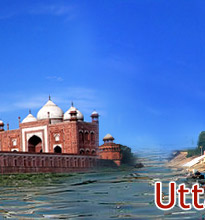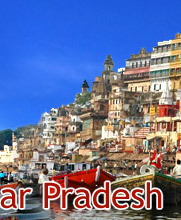 Allahabad
Museum is one of the best-kept museums in India and that is what makes
it a must visit destination in Allahabad. The specialty of this museum
lies in the fact that it has separate galleries devoted to archeological
findings, natural history exhibits, art gallery and artifacts donated by
Jawaharlal Nehru.
Allahabad
Museum is one of the best-kept museums in India and that is what makes
it a must visit destination in Allahabad. The specialty of this museum
lies in the fact that it has separate galleries devoted to archeological
findings, natural history exhibits, art gallery and artifacts donated by
Jawaharlal Nehru. Jawaharlal Nehru, the first prime minister of India, himself inaugurated Allahabad Museum in 1947. The museum boasts off a large collection of displays that are scattered across whopping 18 galleries! The objects on view include prehistoric and Indus Valley antiquities, stone sculpture, terracotta, bronzes, seals, miniature paintings, Buddhist thanks, textiles, weapons, medieval land grants as well as documents and the personal effects of Nehru and the freedom movement.
Beautiful stone images, intricately carved temple pillars and lintels dating from the 3rd century BC to the 12th century AD, represent important dynasties, both ancient and medieval. There are antiquities from nearly all the renowned schools of sculptures namely Gandhara, Mathura, Kausambi and Sarnath.
Nevertheless, the most interesting part of the display is the magnificent terracotta collection of this museum. Indeed, the collection is counted among the largest of its kind in the world. The oldest on the display dates as back as the fall of Indus valley civilization. The subject of these terracotta ranges from dancing and amorous scenes to bacchanalian feasts and hunts. The coin collection has outstanding too and includes Kushana and Gupta gold coins, while the manuscripts that are mainly in Sanskrit, date from the 16th century onwards.









